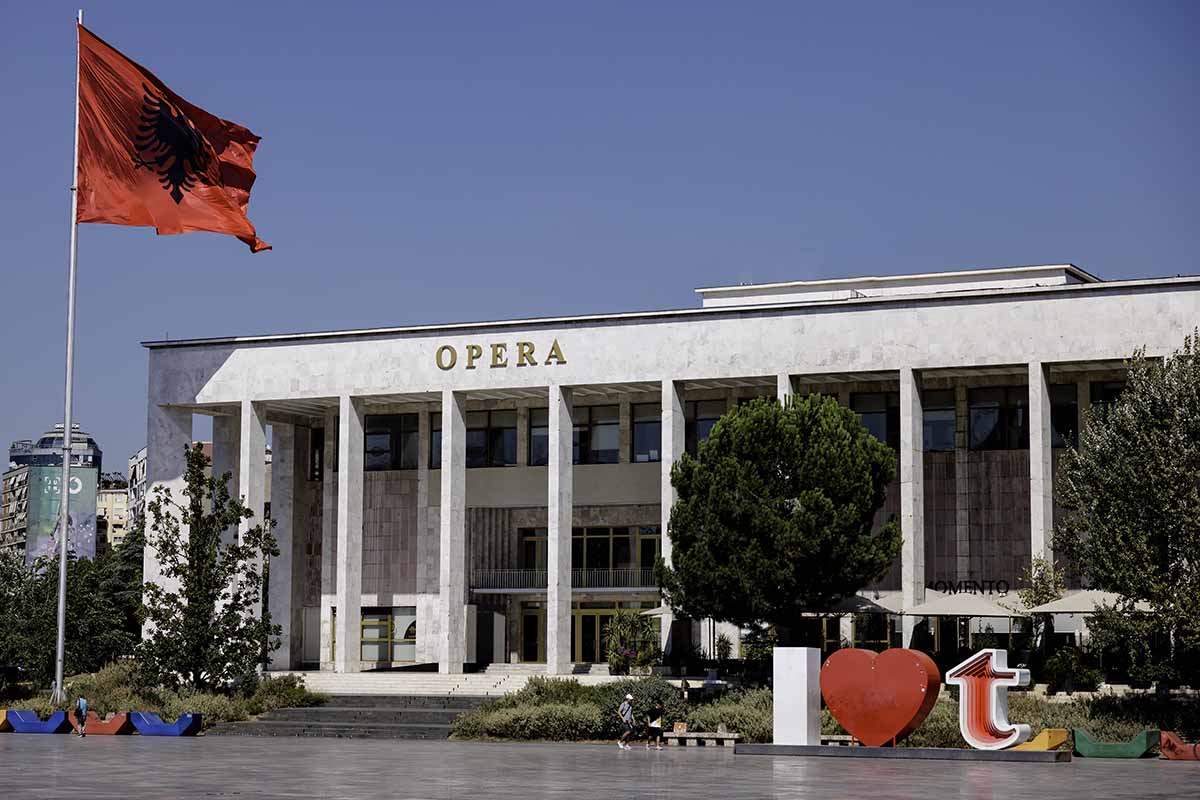10 Best Things to do in Tirana
Tirana, Albania’s capital, is the hottest destination for city breaks in Europe this year. It’s difficult to find one of those 10 places you must visit in 2025 lists without finding Tirana prominently placed.
There’s a reason for this, Tirana’s a fantastic place to visit! Until recently, Albania still suffered from a dark reputation earned during the Communist era. Enver Hoxha ruled Albania with an iron rod until his death in 1985, and his influence on the city can still be seen.
Today, Tirana is a vibrant city with great places to visit, a fascinating culture to explore and, best of all, it’s cheap!
Read on to discover 10 brilliant things to do in Tirana, Europe’s best kept secret.
Explore Skanderbeg Square

Skanderbeg is to Albania what William Wallace is to Scotland, or Owain Glyndwr is to Wales. A national hero who successfully fought the Ottoman invaders during the 15th century.
Skanderbeg Square is the spiritual heart of Tirana. As well as the statue of Albania’s hero, many of the city’s monumental buildings surround the square. These include The National Theatre of Opera and Ballet, the ornate 18th century Et’hem Bey mosque, and the National Historic museum (closed for refurbishment until 2028).
This huge, open plaza is an ideal place to start your exploration of Tirana.
Climb the Clock Tower of Tirana
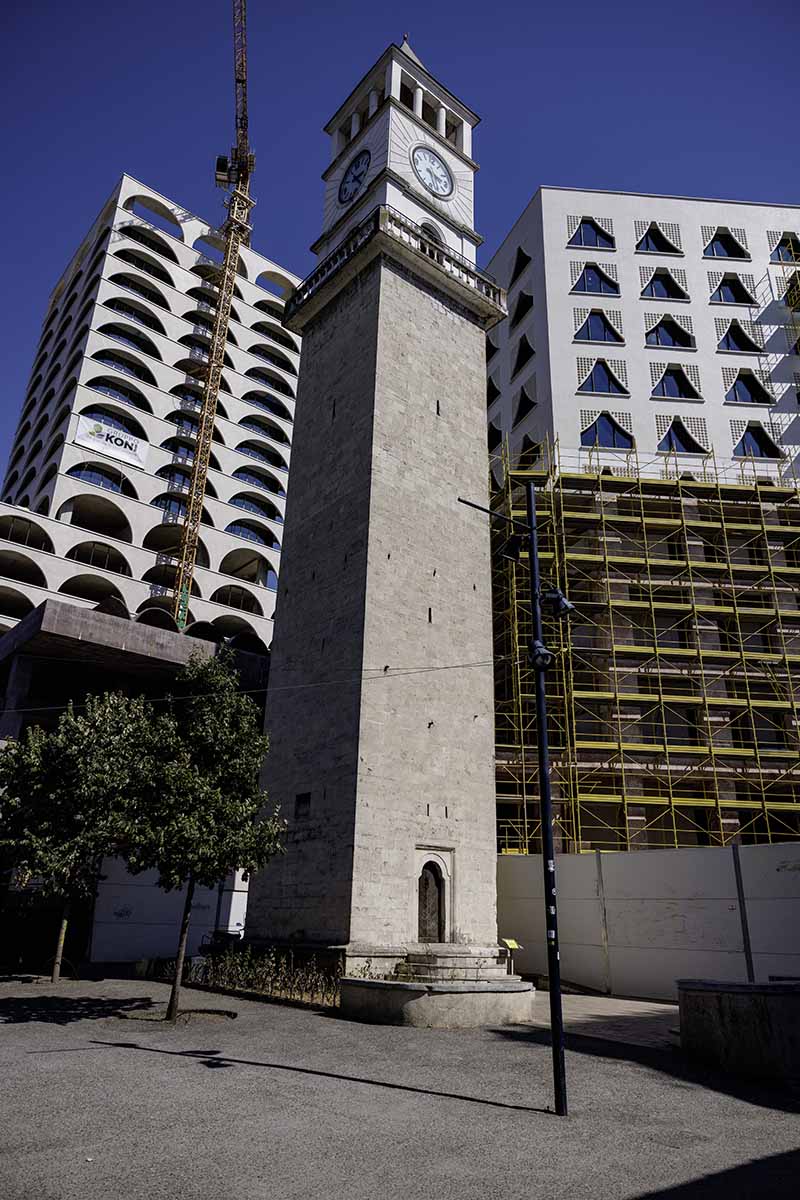
The Clock Tower of Tirana stands just off Skanderbeg Square. It was built in the 19th century by Et’hem bey Mollaj, who was also responsible for the mosque next door.
The original design of this Ottoman era building featured a simple bell rung hourly, but a clock mechanism soon replaced this.
The 90 steps up the spiral staircase reward the effort with a panoramic view of Tirana. You will need to hurry, though. Tirana is in a skyscraper building boom, so the view is unlikely to stay panoramic for long.
Stroll Through Blloku District

The Blloku district has become Tirana’s biggest middle finger to its Communist past.
In the time of Albania’s infamous dictator, Enver Hoxha, only high-ranking party officials could enter this area. Hoxha even built his personal house in the district (it still stands here, but some things don’t change, it’s still closed to the public). A piece of the Berlin Wall can also be found here near yet another bunker, part of an art installation.
Today, the Italian style villas of “The Block” are home to Tirana’s trendiest bars, upmarket restaurants and high-end boutiques and shops.
The best area for nightlife, Blloku is where the locals come to hang out, eat, drink and listen to music.
Discover the Bunk’Art Museums
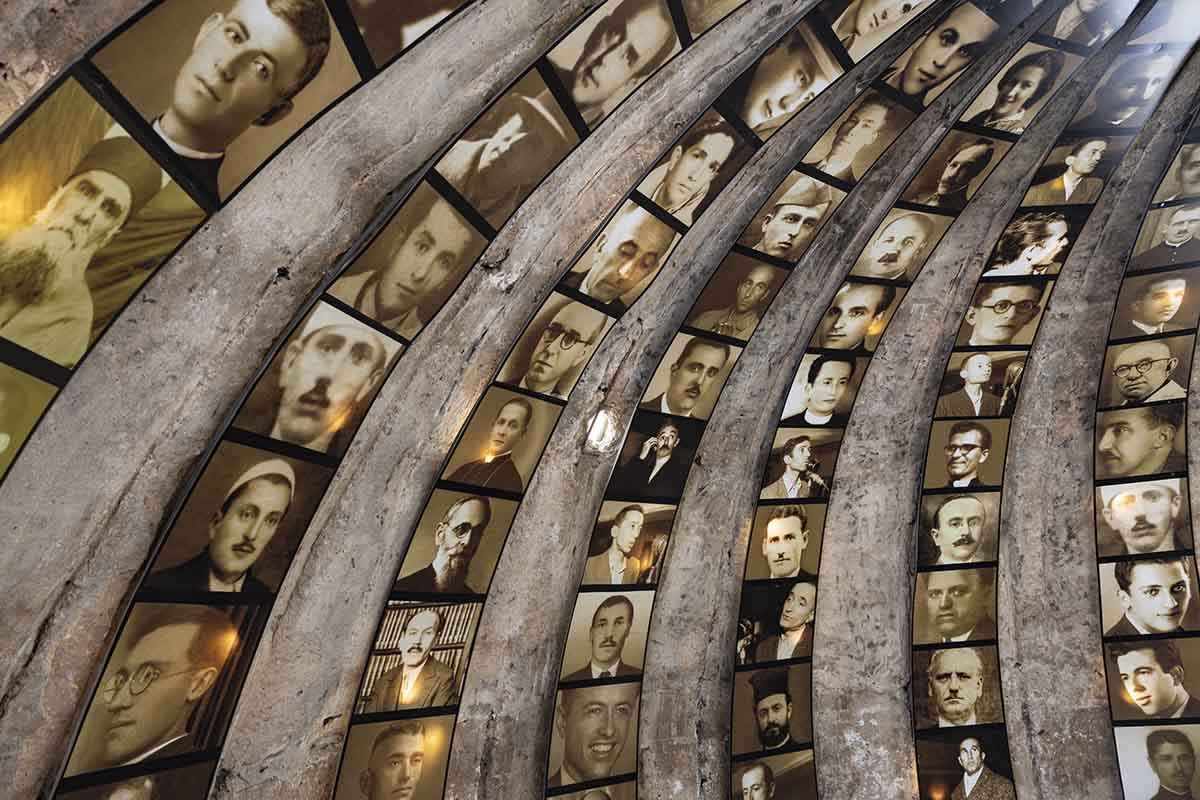
Enver Hoxha’s paranoia was massive and resulted in him building 186,000 nuclear bunkers across Albania. Two are now museums dedicated to Communist era life.
Bunk’Art1 and Bunk’Art2 offer visitors a unique insight into the dark era of Albania’s communist regime.
Bunk’Art1, a 5 storey underground construction, was designed to house Hoxha, his government and military leaders in the (inevitable in his mind) event of a nuclear attack. It lies on the outskirts of Tirana, so it needs a bus journey or taxi to visit. It is, however, close to the Dajti Ekspres cable car (see below) so you could do both together.
Bunk’Art1 is larger than its city centre brother, with over 100 rooms to explore. This allows it to give visitors a broader perspective than Bunk’Art2.
Bunk’Art2 gets much busier than the original because of its city centre location. It also focuses on specific aspects of the Communist era, mainly the actions of the Police force. Be aware, this museum doesn’t shy away from the brutality of its subject, and some artifacts are graphic.
Wander Through the Grand Park of Tirana (Parku i Madh)

The Grand Park of Tirana is an oasis of peace in this bustling capital city. Leafy paths offer a pleasant and shady escape from the roasting Tirana summer heat. These are ideal for walking, or a run for the more energetic.
The park is dotted with restaurants and cafes, and an amphitheatre hosts open air entertainment during the summer.
The Grand Park is the location of King Zog’s palace. Unfortunately, Albania’s first and only monarch didn’t get to really enjoy it because they exiled him soon after its completion.
People fish in the artificial lake, although mixed reports on the water quality make swimming an ‘at your own risk’ activity.
Take a Cable Car Ride up Mount Dajti

The Dajti Express is the longest cable car ride in the Balkans.
Stretching nearly 5km and taking 15 minutes to whisk you up to an altitude of 5,500 feet, it’s one of the must do activities in Tirana.
The summit complex offers a wide variety of activities. These include mini golf, mountain biking, rock climbing or just hanging out in the restaurant or bar to look at the spectacular view.
If the cable car was too tame, try a tandem paragliding jump. You’ll get back down much quicker!
The cable car station is a little out of town (near BunkArt1), but this is an excellent opportunity to familiarise yourself with Tirana’s bus service. Watch this very comprehensive video showing you how.
Note, the cable car and summit complex is closed on Tuesdays.
Visit the House of Leaves (Museum of Secret Surveillance)
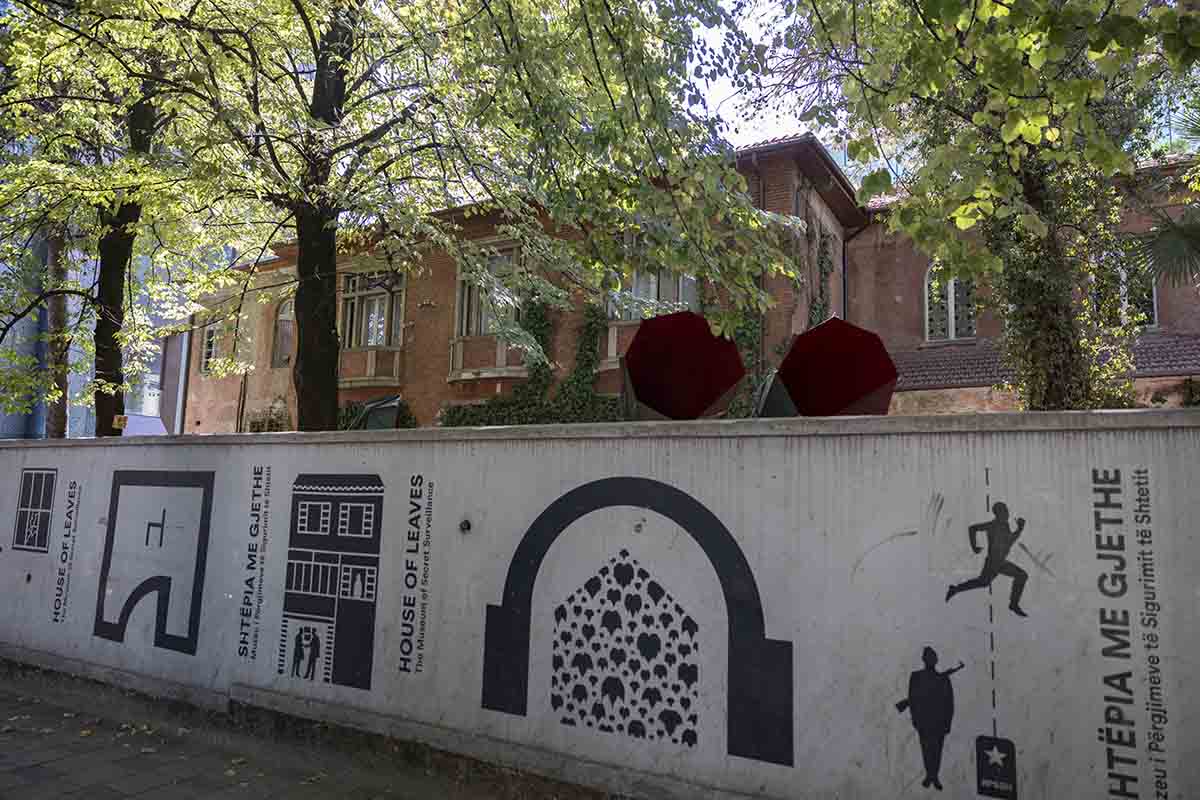
Despite its forward looking ambiance, it’s difficult to avoid the effects of Tirana’s Communist regime. After all, it’s not something that happened in the dim and distant past. The people who suffered it are still here and remember it vividly.
Albanians don’t hide from this painful period. The BunkArt museums depict it candidly, as does another fascinating museum to the era, The House of Leaves.
Named for its ivy-covered walls, the House of Leaves housed the Gestapo during Albania’s occupation during World War II. Postwar, Albania’s secret police, the Sigurimi took over the building.
The focus of The House of Leaves is the incredible lengths Albania’s authorities employed to spy on its citizens. One large room is filled to the brim with surveillance equipment of varying complexity, everything from cameras to a microphone embedded into the broom of a cleaner.
Another room explains the structure of informants. The Sigurimi placed great emphasis on sowing mistrust in the populace. They maintained a vast, hierarchical network of spies. Plotting revolution is very difficult, if your brother, wife, neighbour, colleague could be an informant. The wrong word in the wrong ear would earn a painful, one-way visit to the House of Leaves.
Ironically, the House of Leaves forbids photography.
Slide Down the Pyramid of Tirana

This 70 foot high brutalist edifice was designed as a monument to the life of Enver Hoxha and once held a 22 tonne statue of the former dictator.
Three years after it opened, Communism finally fell in Albania and the pyramid morphed through several uses. At various times, it became a night-club, conference centre and even NATO headquarters during the Kosovo war. The locals even started using it as an impromptu playground, climbing to the top and sliding down the smooth sides.
Today, it’s an IT hub with an emphasis on youth. The multicoloured boxes which split the space give it a bit of a Legoland feel.
Visitors can climb the (now stepped to prevent sliding) building inside and out.
Explore Tirana’s Religious Tolerance
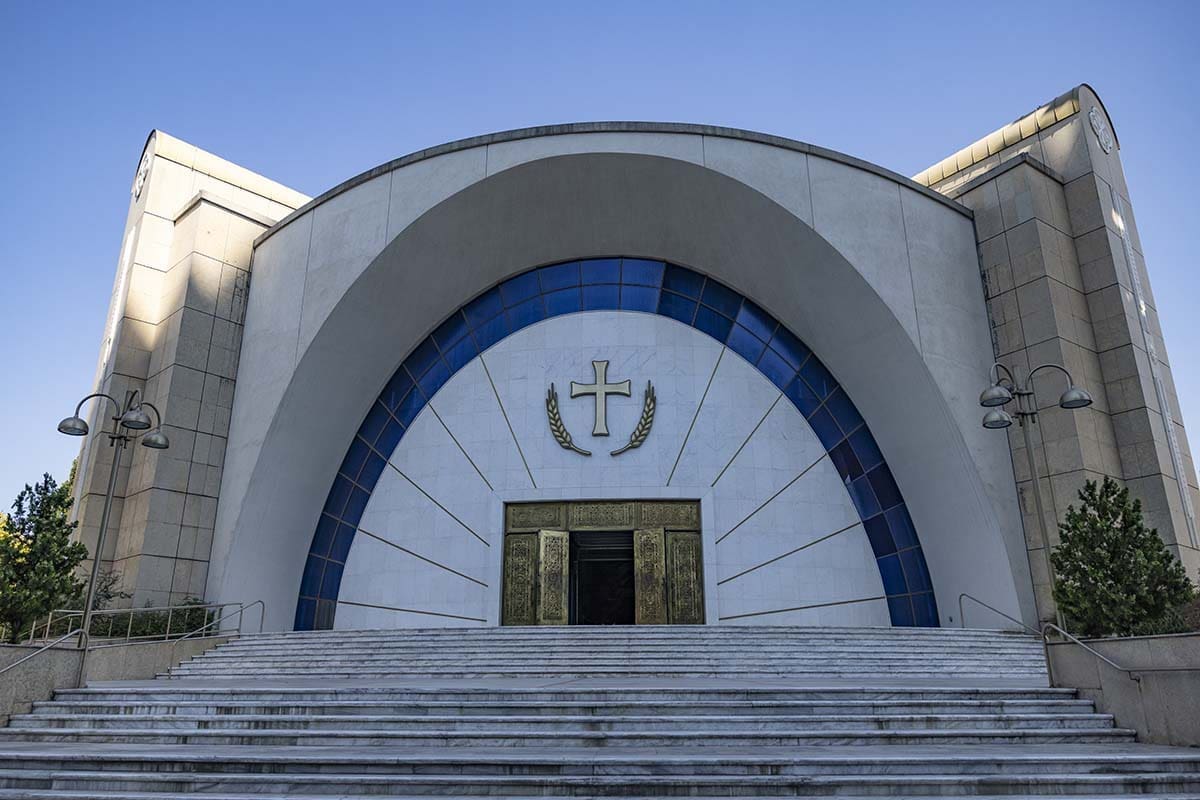
Albania is an extremely tolerant society and many religions exist side-by-side without conflict.
The city has several spectacular religious monuments which are worthy of a visit.
The Resurrection of Christ Orthodox cathedral, completed in 2012, has become a major tourist attraction. Featuring a beautiful blue dome, and a modern look unlike most other Orthodox churches, the interior features some stunning murals.
The main Islamic attraction is the 18th century Et’hem Bej Mosque on Skanderbeg square, which is open to non Muslims. A major new mosque is under construction. The beautiful Namazgah mosque, the largest in the Balkans, will hold 8000 worshippers when complete.
Another relative newcomer, the Catholic St Paul’s Cathedral, was completed in 2002. The land it is built on was donated by the government when Pope John Paul II visited in 1993.
Explore Albania with Expert Guides
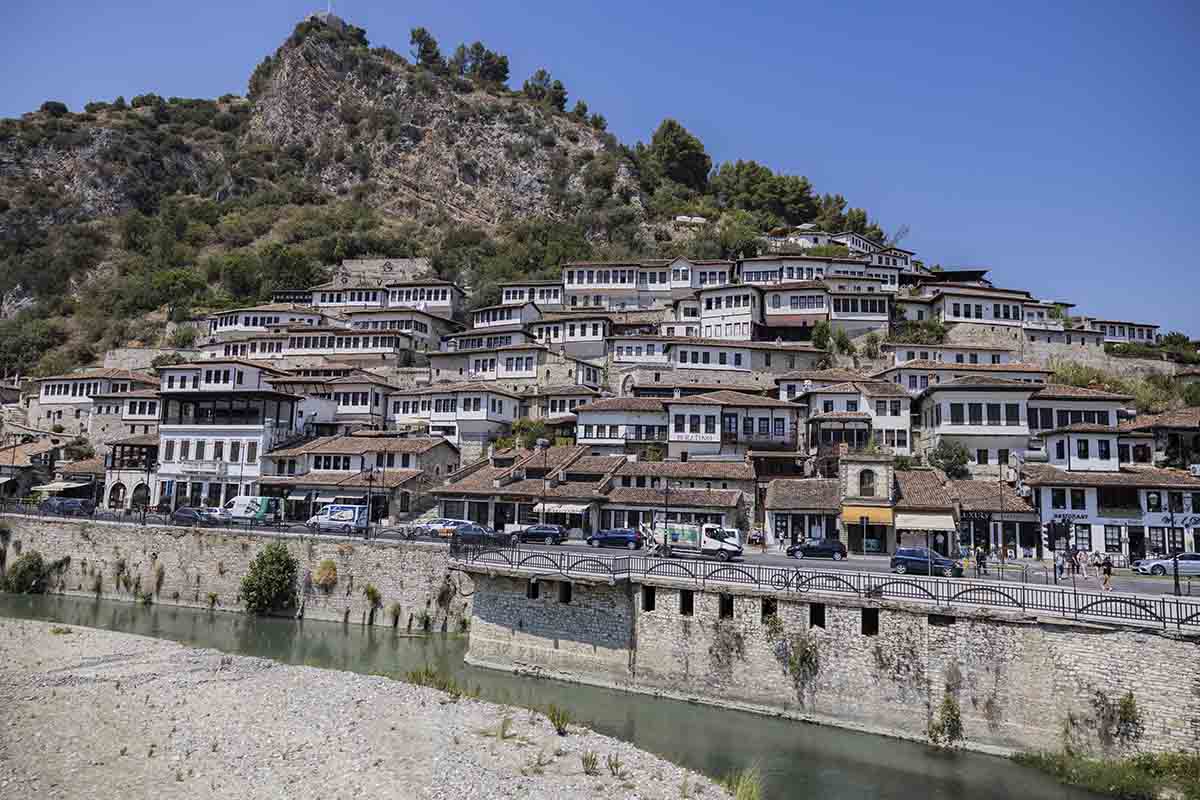
Tirana’s location makes it an ideal base from which to explore Albania. Options include:
- Walking Tour of Tirana – An excellent way to orientate yourself in a new city. Iris Elezi, a Tirana documentary filmmaker whose film BOTA was shortlisted at the Cannes Film Festival and represented Albania at the Oscars, guided the tour I took (detailed below).
- Day Trip to Berat and Durres – Durres on the Adriatic coast has a fascinating history with Roman, Byzantine and Venetian remains. Berat is a UNESCO heritage city with a 2500 year history. It is known as the City of Windows because of the unique architecture of the houses here.
- Day Trip to Kruja – The stronghold of national hero Skanderbeg holds a museum to his memory. The town also has a quaint bazaar, with some interesting gift buying opportunities. A newly opened Ethnographical museum explores Albanian culture. This tour also stops at the shrine of Sari Salltik, a 13th century Turk credited with introducing Islam to the Balkans.
Conclusion
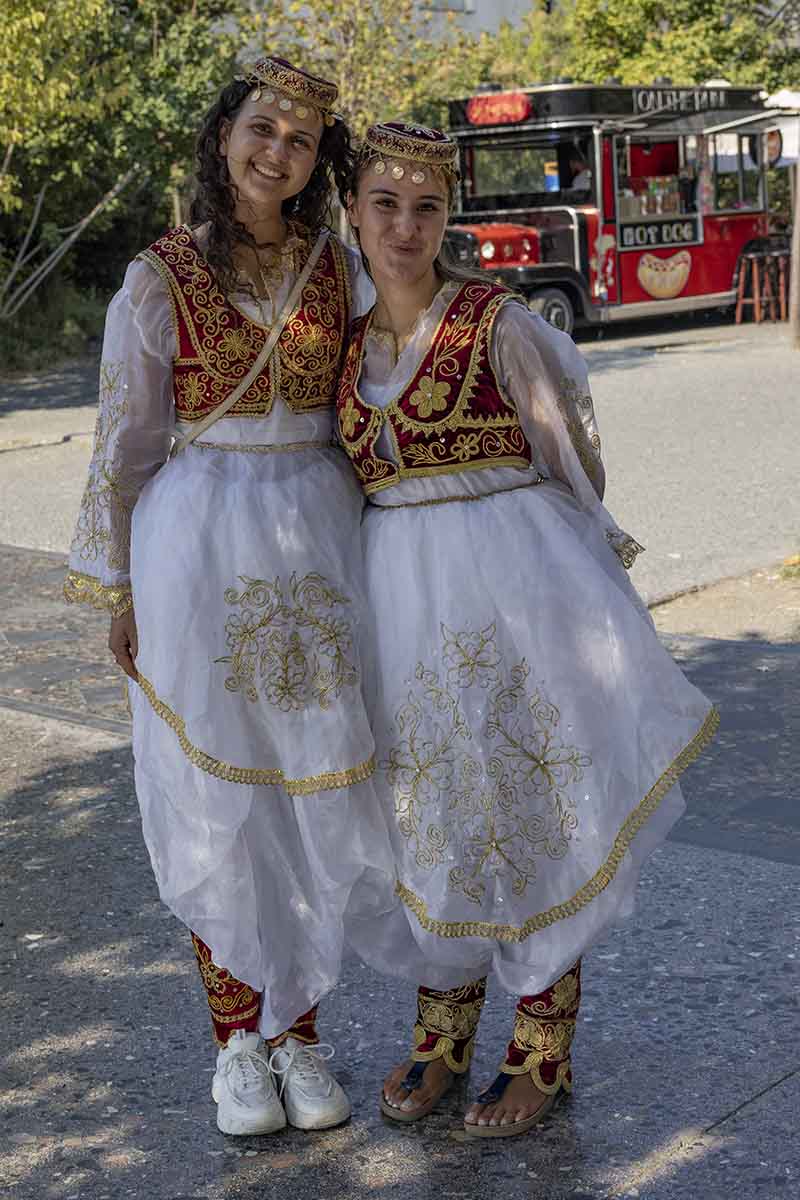
Tirana is a fascinating city in a country which is still rediscovering itself after the isolation of Communism. Tourism is still a relatively new thing, so visitors still get the feel of an authentically welcoming culture. Visit now before it becomes mainstream and homogenised.
Related Posts

